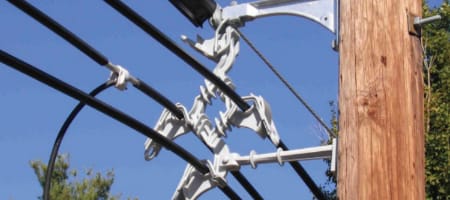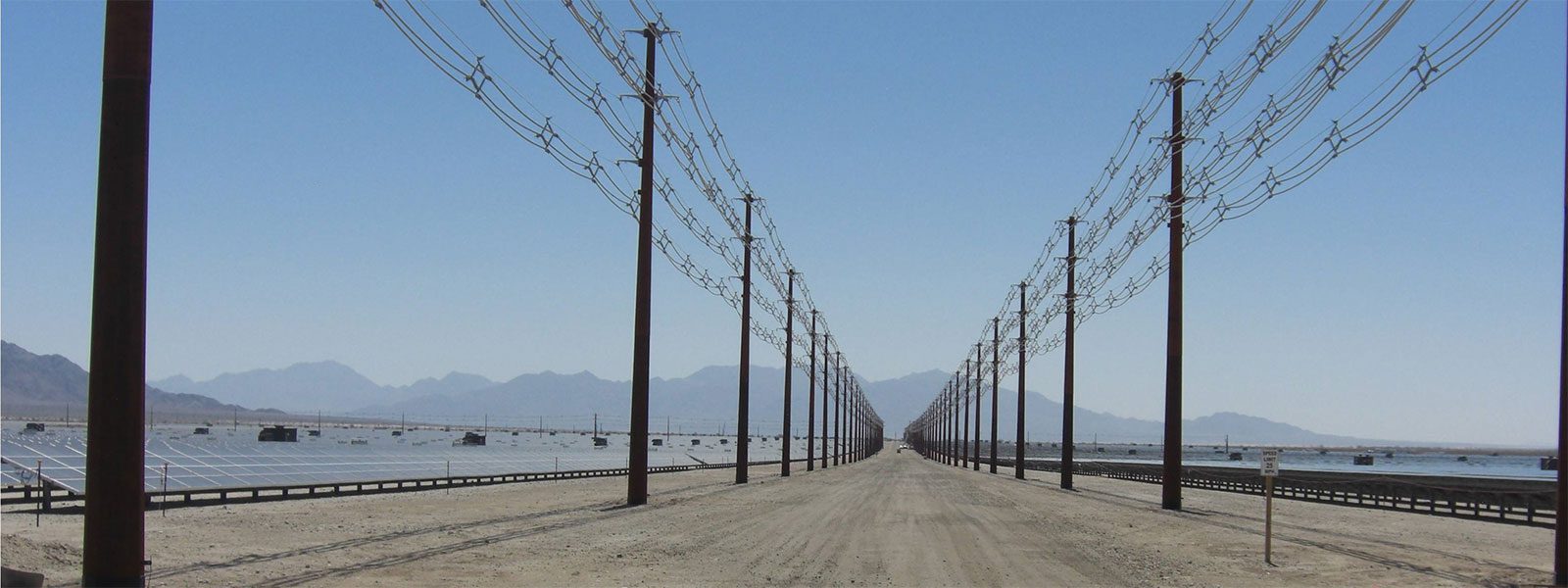Introduction
Utilities worldwide, in an effort to improve the level of service and reliability of electric power delivery, have been investing in medium voltage construction practices that have proven those aims are achievable. Two that have been used in North America since 1951 are the Aerial Spacer Cable System, originally designed by Bill Hendrix, and the Tree Wire configuration which utilizes covered conductor in open construction on cross arms with polyethylene insulators. The purpose of this paper is not to discuss the features and benefits of either of these systems, but rather to present recent developments in the field of connector technology used with these covered conductor systems.
The Fundamentals
In order to connect transformers to a covered conductor line, the utility is required to strip the covering to install the connector. In most situations, the tap is left bare and a protective covering is placed over the messenger above the tap to prevent temporary outages which might occur from tree or animal contact. As an added standard precaution, an arrester is also used to avoid possible problems in the event of lightning strikes.
Perceived Challenges with Covered Wire Systems
One of the challenges expressed by utilities in adopting spacer cable and covered wire systems is the difficulty in adequately and safely stripping the conductor covering prior to making a tap. When utilities have needed to make a tap for a transformer, the requirement has always been to strip the cable. As with anything, this is a relatively simple process with the correct stripping tools. However, tools are not always available or not always in good working condition. In some cases, line workers have taken to using knives to strip the insulation. This creates safety hazards at the jobsite, and also introduces the possibility of damaging the insulation
and/or the cable, impacting the long term reliability and integrity of the cable. Other safety concerns with stripping, like being too close to adjacent phases, the awkwardness of stripping tools, or the difficulty of stripping with temperature, inherently cause reluctance on the part of some utilities to adopt covered conductor usage in a significant way.
Insulation Piercing Connectors
Technological advancements and the development of Insulation Piercing Connectors (IPCs) have eliminated the need for insulation stripping – which leaves the system fully insulated and water-sealed. The technology goes a long way towards achieving goals the industry has had for years:
- Avoid stripping altogether
- Increase the safety of line workers
- Avoid damage to the cable
- Maintain the reliability/integrity of the grid
European versus North American Adoption
IPCs actually have a long history of usage worldwide for low voltage systems, and have been used with medium voltage (MV) applications in Europe for over a decade. Adoption of IPC technology in the USA has been slower, but that is about to change, as the new IPCs go a long way towards addressing these industry concerns. European standards for covered conductors EN-50397-2 (Covered conductors for overhead lines and the related accessories for rated voltages above 1kV AC and not exceeding 36kV. Part 2: Accessories for covered conductors: Tests and Acceptance criteria) are quite different than what are used in the US and which are codified in international standards (ICEA S-121-733 is the Standard for Tree Wire and Messenger Supported Spacer Cable). The standards adopted in North America require much thicker insulation for covered aerial cables than what are utilized in Europe. While
IPCs passed the EU standard type tests ages ago, there was the concern for use of the IPCs at the thicker insulation levels. This concern was overcome with the IPCs passing ANSI C119.4 (Connectors for Use between Aluminum-toAluminum and Aluminum-to-Copper Conductors Designed for Normal Operation at or Below 93°C and Copper-toCopper Conductors Designed for Normal Operation at or Below 100°C.).
Faced with these challenges, a rigorous and comprehensive type test program was designed (see Figure 5) which addressed all of the concerns of ANSI C119.4, while also including type test from EN-50397-2 when the ANSI standard did not address a concern included in the European standard.
Industry Concerns and Early Adopters
Utilities across North America continue to be skeptical (as they are with any “new” technology), concerned about improper installation of IPCs and ultimately with system failures as a result. Further research has shown that failures result from improper stripping and tapping without IPCs, and that failures resulting from poor workmanship are an unfortunate industry reality. Installation of IPCs are by no means fool proof, and formal installation procedures should be followed. But industry goals are to drive failures and accidents to zero, and proponents of IPCs in the covered conductor marketplace hope the newly adopted IPC technology will help in that regard.
Early adopters of IPC technology see widespread introduction and adoption of IPCs as the logical next step to enhance grid reliability. Utilizing covered conductors such as Hendrix Aerial Cable as part of grid hardening initiatives is the first step. With proper installation techniques implementation of covered conductors can be a great success. And with the use of IPCs, the installation is simplified tremendously, saving a significant amount of time (and money) with the actual installations, and increases the reliability of the cable – since the IPCs nearly eliminate cable damage.
IPC = Increased Grid Reliability
Now that IPC technology has been given the green light – after years of field-proven experience and now backed by type tests to meet ANSI specs with thick-jacketed ICEA standards – utilities across North America have one less hurdle with implementing covered conductors across their networks. And they now have one less hurdle for implementing their grid-hardening programs. Implementing covered conductors across their network is now easier than ever, and utilities gain the added benefits of: improving the safety and well-being of their crews in the field; decreasing installation costs; decreasing grid hardening costs long term; improving grid reliability; and increasing customer satisfaction across their network. Whether in the Black Forest of Europe or the back roads of North America, these are goals that any utility should hope to attain. And IPC technology, used in conjunction with covered conductors, certainly provides a proven method for which they can attain these goals.
Brian Trager is the Director of Technology and International Sales at Hendrix Aerial Cable Systems in Milford, NH.




